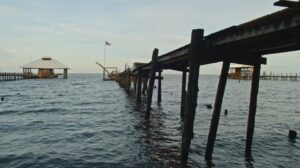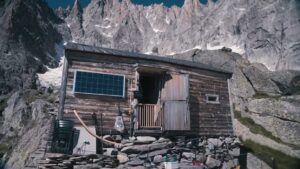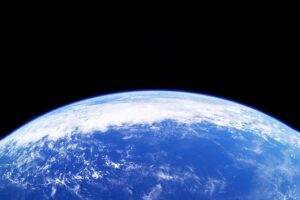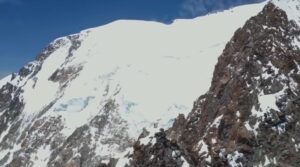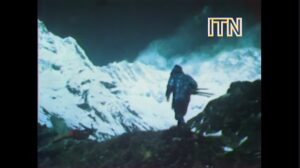STORY AND PHOTOS BY FIANN PAUL
As a psychoanalyst, I hear more and more about the presence of indigenous peoples in the dreams of my clients. Why are they so important to the human psyche? Is it because their culture is slowly fading away and can only be experienced as a dream?
Partly. Indigenous peoples represent an important part of both ourselves and our planet and its history. This part of us also disappears, and sometimes it cries out for help.
I have learned a lot from my clients while working as a psychoanalyst. The modern world is predominantly an intellectual construct that ignores the primal side of man.
Most clients are looking for a chance to communicate with this mammal, with this unregulated aspect of themselves. As humans, we have lived at least 100 times longer this way than the intellectual part of us. That primal self has many answers on how to find happiness in life.

As a photo project, Fiann Paul created portraits of breastfeeding women in remote parts of Iceland.
Understanding the body
When we understand psychology better, we see that this part of man rules mankind much more than the intellect. Unfortunately, when we disregard it, it rules more by retaliation than cooperation. An important element of this is to understand our own bodies, a skill that we Westerners have almost completely lost. We often drag the body along like a mechanical object. The bodies of indigenous peoples are perfectly integrated into their lives, and we can learn a lot about our bodies from them.
Indigenous peoples are wearing only about 100 years of guilt and shame that have been stuck to them by modern culture. Westerners have carried this burden for much longer, at least several centuries. Sometimes it is difficult for us to hear our own voices from beneath these negative feelings, and we have the impression that we will not have enough life to break through.
But indigenous people hear this inner voice whenever it calls, and this 100-year-old layer holds on very provisionally. I don’t just mean people living in the jungle. I am also thinking of the ones who live in cities, even for two generations.

Social roles
Another great talent of the indigenous peoples was their understanding of social roles and the mastery of procedures, rituals, and therapies. We ourselves often know nothing about these social roles. What does it mean to be a woman, a man, a teenager, or a parent?
It is also worth adding that most of these cultures had great tolerance for all sexual orientations. Nowhere in Europe have I seen such openness to the LGBT minority as I did 13 years ago when I visited small towns in Greenland for the first time.
The most important thing, however, is that we are only now learning how not to be parasites on this planet. Recycling and sustainable development are core principles of indigenous peoples that we are rediscovering. Many years ago, people tried to teach us that we should use up all the buffalo we have killed, eat every part of it, and not peel off the skin and waste the rest.

The Calhoun experiment
We are now living in times of anxiety and fear. Our psyche must use many defense mechanisms to cope with permanent tension. In economically advanced countries, so-called professional communication has prevailed. This presupposes that one should aim for as few confrontations as possible. Often strange terms are used to avoid confrontation. Since work makes up most of our lives, this style of communication infuses our private lives as well. Outwardly, it appears as isolation with a hint of frustration.
I recommend that everyone read the Calhoun Experiment. In the 1960s, researchers placed a few pairs of mice in an environment imitating a human city. As numbers of mice increased, they established factions, mating ceased, and the society eventually collapsed. Calhoun suggested that overpopulation and an artificial environment led to social breakdown. Some touted these experiments as a possible metaphor for the human race.
Calhoun’s conclusions were very controversial. Of course, animal experiments do not always translate exactly into human society, but they may have some truth to them. At this point, it is worth mentioning the concept of biophilia, introduced by psychologist Erich Fromm. It means adoring life. Biophilia is one of the factors of the harmonious interplay of man and the biosphere. This quality is difficult to develop when we are surrounded by mostly inanimate objects or inauthentic life experiences.
Pioneers of the spiritual world
Although some might argue that indigenous cultures are based in the past, they also add a great deal to the modern world. However, I do not encourage you to visit where they live. This is a lesson I learned years later. Not because the meetings were unpleasant. Quite the opposite — they were magical for me. However, they received little benefit from these interactions.
Instead, we can ask ourselves important questions and apply critical thinking. It is worth understanding that when we talk about, for example, the discovery of lands by Europeans, almost no one actually discovered any land. The indigenous people were explorers long before that.

In a sense, they were also pioneers of the spiritual world. They assumed that everyone should develop direct contact with it. They also developed many natural methods of exploring spirituality and understood that nature is the doorway. A bond with nature was almost synonymous with a bond with the spirit.
Many years ago, I was offered a doctoral study in France under the brilliant professor of anthropology and geographer Jean Malaurie, author of the classic book, The Last Kings of Thule. He also wrote a work about indigenous peoples that suggests that by failing to understand nature, we will never understand indigenous people and their soul.
Reality as myth
Indigenous communities understood reality mythologically, not scientifically. It was not necessary to understand photosynthesis to feel that the forest needed preserving. Although science is the leading force in the development of civilization, if it does not leave an open door for the irrational in our lives, it takes away our contact with the archetypes inside us that help our development. These archetypes do not act as external mythological gods, but as internal structures that emerge in moments of crisis.
Nor did the indigenous people need scientific research to naturally create a lifestyle that encompasses all the pillars of mental health. From healthy eating, through healthy sleep and physical activity, to contact with nature and friendship. In my short life, I have seen the Western way of life bring civilization problems, such as depression and isolation, to Africa. Behind them, of course, psychotherapy appeared, originally redundant in these regions.

I don’t want to idealize indigenous communities. Some of them also have many problems. They are certainly not the answer to all the questions that vex us, especially since everyone stands at least with one foot in the world of technological development. Some of these cultures have destructive elements, either from their own traditions or from the influence of Western cultures and religions that have mutated their original way of life.
After all, the indigenous peoples knew something that we do not know, something that may be important to us today. So when they appear in our dreams, it is worth probing further.
Films about indigenous peoples
Below, a list of movies from which we can learn about these cultures. The creators tried to be objective. Many represent, at least in part, the plight of indigenous peoples today. Based on their stories, we can understand what values were taken away from them.
I purposely chose not only films that focus on the decline of cultures, but also those that inspire. For the same reason, members of indigenous communities allowed me to photograph them. They knew that I was focusing not only on the effects of colonization but on their triumph.
The rating of most of these movies on Rotten Tomatoes is close to 100%, and this is not common. These are only trailers, but you can track the full movies down from here.
19. Embrace of the Serpent, South America, RT: 96%
A film about an encounter with ancient ethnography or anthropology, when an anthropologist had to be a geographer, artist, explorer, to understand the secret of one of the indigenous cultures, the Yakruna plant. It’s a fictional name, but it clearly harks back to Chacruna, one of the ingredients of shamanic brews in South America. Science meets magic in the field of truth.
18. Rabbit Proof Fence, Australia, RT: 88%
The film illustrates the attempts to socialize the so-called Stolen Generation of Aborigines in Australia. A touching story of three children who escaped from the centre, where they were to earn to adapt to modern life. Fleeing the authorities, they travel alone, 2,400km through the Australian Outback in search of their home. The title brutally refers to a historical phenomenon in Australia — a fence that protects crops against pests, and which marked the trail for children.
17. “Whale Rider”, New Zealand, RT: 91%
The story of a young girl trying to find her place in family and tradition. Her search is summed up with a majestic quote: “I am a descendant of the whale riders. I am not a prophet, but I know we will move forward together. ”
16. Ashes and Snow, Worldwide, RT: None
Cinematic visual poetry showing the bonds between animals and indigenous peoples from different parts of the world.
15. “Ten Canoes”, Australia, RT: 98%
The first movie in which all dialogue is in the Aboriginal language. Not only the content but also the way of storytelling is close to the Aboriginal culture, so we experience a different reality in various ways.
14. “Kirikou and the Sorceress”, Africa, RT: 96%
An animated film based on stories from West Africa. The title character is a little boy who saves his village from dark forces.
13. “Nanook of the North”, North America “, RT: 100%
To say that this is an old movie is not enough. It is the world’s oldest documentary, from 1922. It documents the life of one of the indigenous inhabitants of the polar regions. Prose and poetry of everyday life.
12. Blueberry, North America, RT: 22%
This is the only almost-Hollywood movie on this list. It depicts the life of a sheriff who was raised by Native Americans. He secretly keeps in touch with them and guards their welfare. He also participates in their rituals, consumes psychoactive decoctions with them, then receives guidance in altered states of consciousness.
11. Rockwell Kent (Second Part), Greenland, RT: None
The biography of a Renaissance man, Rockwell Kent, or rather its second part, in which Greenland becomes home to his political idealism and “cursed libido”. It is a portrait of Greenlandic society drawn by someone of great depth who had the courage to perceive and experience.
10. Dreamkeeper, North America, RT: 94%
The story of a grandfather and his grandson going to a modern Native American gathering together. The grandson is a rebellious young man and is not interested in his tradition. During this journey, his grandfather tells him some stories that are shown in the film.
9. “Tanna”, Oceania, RT: 93%
A film about tribes, love, tradition, taboo, and the power of nature. An adaptation of a true story that happened on one of the islands in Oceania.
8. “Kanyini”, Australia, RT: 100%
The narrative presents the current situation of the Aborigines, but it also applies to most indigenous peoples, as the colonization effects are the same almost everywhere.
7. “The Only Good Indian”, North America, RT: 70%
A micro-history of a hero and an allegory on a larger scale.
6. “Liyana”, Africa, RT: 98%
A therapist in South Africa uses therapeutic storytelling, and these stories are made by children who receive therapy. Spontaneous improvisation shows their wounds and hopes, despair, harm, but also the power of forgiveness. A masterpiece.
5. “The Pearl Button”, South America, RT: 94%
A document largely about the people living near Cape Horn. About beautiful people who have been drowned in the dark waters of humanity.
4. “Dersu Uzala”, Asia, RT: 73%
The only non-Japanese film by the Japanese master of cinema, Akira Kurosawa, is sometimes also considered his best. Based on the true story of the friendship between the Russian explorer Vladimir Arsenyev and an indigenous inhabitant of Siberia named Dersu Uzala. Dersu teaches Vladimir everything an explorer needs to know about nature and survival, and how to be human.
3. “Journals of Knud Rasmussen”, North America, RT: 80%
A film based on a true story written in the journals of the legendary explorer Knud Rasmussen. It illustrates the topic of the Christianization of the Arctic and documents the latest stories of the shamans of these areas. I consider the scene in which the shaman has to send his helping spirits back forever the strongest, most heartbreaking scene in the history of cinema.
2. “Emerald Forest”, South America, RT: 81%
A brilliant film about the pains of the exploitation of nature and indigenous peoples, it is also sometimes cited by psychologists for its portrait of a good father figure. A film adaptation of the true story of the kidnapping of a child whose engineer father was engaged in commercial logging of the Amazon forest. The father searches for his son for years and when he eventually finds him, he has a lot to learn about him, about the natives peoples, about forests, and about himself.
1. “Sami Blood”, Europa, RT: 97%
When asked about my favorite movies, I give two titles: Sami Blood and Song of the Sea. Location: yes, Europe. Why do I put this movie in the first place? Perhaps because it’s just a beautiful movie. Or perhaps because it painfully reminds me of pieces of my own story. Today you can find interesting examples of the integration of both cultures that clash in the film.
Originally published in the Polish version of National Geographic. Reproduced by permission of Fiann Paul.

